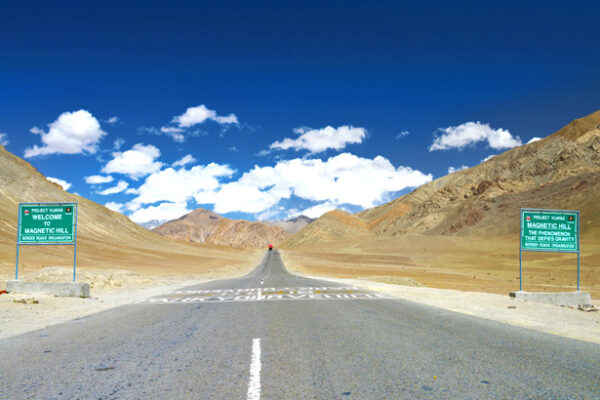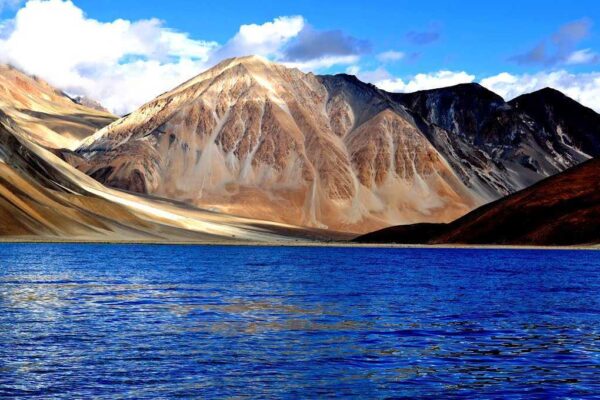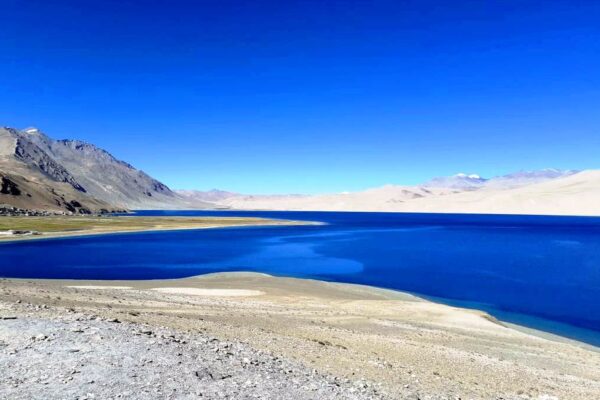Magical Ladakh

Ladakh or the ‘Land of High Passes’ is a barren yet beautiful region located in the north Indian state of Jammu and Kashmir. Sharing its east border with Tibet, Ladakh has Lahaul and Spiti to its south and the Kashmir valley to the west. Strategically placed on ancient trade routes, Ladakh lies between the Kunlun Mountains in the north and the Himalayas in the south. The region originally comprised the Baltistan valley, the Indus Valley, Zanskar, Lahaul, Spiti, Aksai Chin and Ngari.
Day 1: Arrive Leh
Arrival Leh Kushok Bakula Airport (This must be one of the Most Sensational Flights in the World. On a clear day from one side of the aircraft can be seen in the distance the peaks of K2, Nanga Parbat, Gasherbrum and on the other side of the aircraft, so close that you feel you could reach out and touch it, is the Nun Kun massif.) Upon arrival you will meet our local representative and transfer to the Hotel for Check in. Complete day for rest and leisure to acclimatize followed by Welcome tea or Coffee at the Hotel. Evening visit to Leh Palace, Shanti Stupa & Leh Market. Overnight at Hotel.
Day 2: Leh- Excursion to Sham Valley
After breakfast you drive downstream along the River Indus on Leh – Kargil Highway. And start our sightseeing with Hall Of Fame (Museum Constructed by India Army) near Leh is worth a visit for every Indian, and proceed further to Gurudwara Patthar Sahib at an altitude of 3600 Mtrs about 22 Kms from Leh was constructed in memory of Guru Nanak Dev ji Nestled deep in the Himalayas, A drive of another 4 km took us to Magnetic Hill which defies the law of gravity. As you move ahead from Magnetic Hills, just before Nimmu Village, there comes a famous Confluence Of Two Rivers Indus River coming from Tibet (left) and Zanskar River coming from Zanskar Valley (right). Zanskar River is known for its famous Chadar Trek. Later we drive back to Leh.
Day 3: Leh–Nubra Valley Via Khardung La
Post breakfast we drive to Nubra Valley. The road journey from Leh to Nubra Valley passes over Khardung La (The Highest Motorable Road In The World) at 5,602 Mtrs / 18,390 Ft, around 39 km from Leh. From the pass, one can see all the way south over the Indus valley to seemingly endless peaks and ridges of the Zanskar range, and north to the giants of the Saser massif. Nubra Valley is popularly known as Ldumra or the valley of flowers. It is situated in the north of Ladakh between the Karakoram and Ladakh ranges of the Himalayas. The average altitude of the valley is 10,000 Ft. above sea level.
Upon arrival in Nubra we check in at our Camp / Hotel in Hunder for Overnight stay. In the evening you can walk around the tiny villages to see how the locals live in this part of the world. A visit to a Ladakhi home can be arranged. Overnight Stay at the Camp or Hotel.
Day 4: Hunder – Turtuk – Hunder
After an early breakfast we drive to Turtuk, and a lot of other small villages, were brought under Indian control after the 1971 war, when the Indian army pushed the Pakistani soldiers past the mountains towering the Nubra Valley. Turtuk lies at the extreme corner of the Indian border, and hence its accessibility is a challenge. Due to treacherous roads and sensitive army base camps, permits were not issued to Indian civilians until late 2010.
Although the roads are marred by landslides and shooting stones, the 3 hour drive from Hunder to Turtuk is nothing less than exceptional. Throughout the journey, one has the company of Shyok, as well as the vistas, that define the barrenness which is characteristic to Ladakh.
After visting we drive back to our camp or Hotel in Hunder for Overnight stay.
Day 5: Nubra Valley To Pangong Lake
After an early breakfast we check out from Camp or hotel and drive towards Hunder where you have the opportunity to ride on a bacterian camel (double humped) amidst the sand dunes of this high altitude desert with snowcapped mountains on the horizon. Between Hunder and Diskit you come across sand dunes besides the road. Seen in isolation you could well be amongst the sand dunes of the Thar Desert in Rajasthan.
On the return stop at Diskit which is the headquarter town of Nubra Valley. Diskit is famous for 515 years old Buddhist Monastery, lying magnificently situated on a hilltop, facing the entire Valley.
Later we drive towards Pangong Tso via Agham & Shyok Valley.. After the success of 3 Idiots, this beautiful natural location has attracted more tourists from all over the world. Upon arrival we check in at our Camp Near Pangong lake. Dinner & Overnight at the Camp
Day 6: Pangong Lake – Tsomoriri
After an early breakfast we check out from our camp and start our another interesting journey to Nyoma passing through Man-Mirak Village, Chushul – the attraction is 1962 War Memorial and one of the four officially agrred BPM (Border Personnel Meeting) Point between Indian Army and People’s Liberation Army of China for regular consultations and interactions between the two armies, which helps in defusing face-offs
We drive further to Tsomoriri Lake located at 14,000 ft. near a small village of Korzok. Recently opened to foreigners due to the proximity of the Chinese boarder, the Changthang is a land of wilderness and magnificent landscapes, Tsomoriri Lake is also the breeding ground for numerous species of birds, like the bar headed goose, crested grebe, the Brahmini duck (ruddy sheldrake) and the brown-headed gull. The Tsomorir Lake is 8 kms wide and 28 kms long. Upon arrival we check in at our camp for overnight.. Spend your evening on lake by leisurely walk on the banks of lake. O/N Korzok.
Day7: Tsomoriri - Tsokar – Tanglangla – Leh
After an early breakfast we check out from our camp and visit Korzok village with its houses and its Gompa appearing like a mirage. The few barley fields at Korzok must be among the highest cultivation in the world. Later we drive to Tsokar, The nomadic people Changpas are most outstanding feature of this area. They can be seen moving from one place to other grazing herds of goats, sheep and yaks. Changpas pass their days with their animals and move with their flocks, their only wealth from pasture to pasture according to changing season. Their flocks, their yaks, and goat’s hair furnish the raw material of which they make their ropes, their clothes and shoes. All day long men and women are busy milking, churning the milk into butter, making ropes, weaving mats and other fabrics. These people have been completely beyond the pale of all civilizing influences. Even towards the fag end of the twenty first century, they belong to a primitive pre-historic age, The Drive is scenic and Tsokar lake is one of the best. And after spending some time we proceed further to Leh. Dinner & Overnight at Hotel in Leh
Day 8: Departure From Leh
After breakfast, get transferred to Leh Airport for boarding the flight to your destination. Tour Concludes with some wonderful long-lasting memories.






